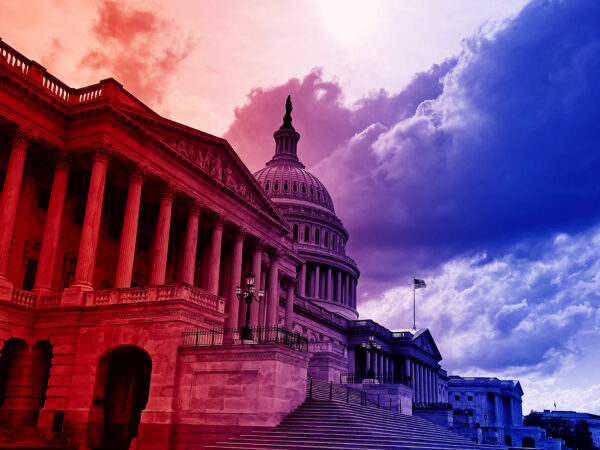Surveys show President Biden in deep trouble, but Democrats believe voters are disengaged and they have plenty of time to get their message out. Some are choosing to ignore surveys that show Biden behind, which is similar to Republicans that didn’t believe polls showing anything other than a Red Wave in 2022.
Democrats would be wise to heed the warning signs and take advantage of the time. Inflation is the central problem that haunts the Biden team nationally and in the states, and the White House hasn’t yet found a compelling economic message that voters believe. Our latest look at the presidential ranges shows the President having significant ground to make up. Ranges are based on the Real Clear Politics averages, removing outliers of the highest and lowest poll results for each candidate. This allows us to see the highs and lows for the candidates, and how much room to run each candidate has. As shown in the chart, Biden underperforms Trump nationally and in the Blue Wall States.

What Democrats see as Biden’s Blue Wall is the group of states (MI, PA, WI) that comprised Trump’s 2016 Rust Belt Coalition. Several traditional Democratic voter groups shifted toward Trump from 2012 to 2016, producing the “Rust Belt Surprise.”
Voters that were critical to Trump’s 2016 win were those who said the economy was “not so good.” According to the exit polls in 2012, 23% said economic conditions were excellent/good and 77% said not so good/poor. In 2016, it was 36% excellent/good – 62% not so good/poor. A key group were those voters who said the economy was “not so good.” In the 2012 election, this group made up 45% of the electorate, and Romney should have carried them. Instead, they went for President Obama by a 13-point margin of 42-55. In this election, they made up 41% of the electorate, and Trump carried them by 13 points at 53-40.

The results in the Rust Belt states displayed this shift on an even a larger scale. The largest shift was in Michigan where President Obama had previously won these voters by 18 points. In 2016, Trump won these voters by 26 points, a 44-point swing. It is not simply that he won these voters in this set of states after Romney had lost them; it was the magnitude of the results gained. With inflation being a top voting priority, the possibility is there for this to happen again.







